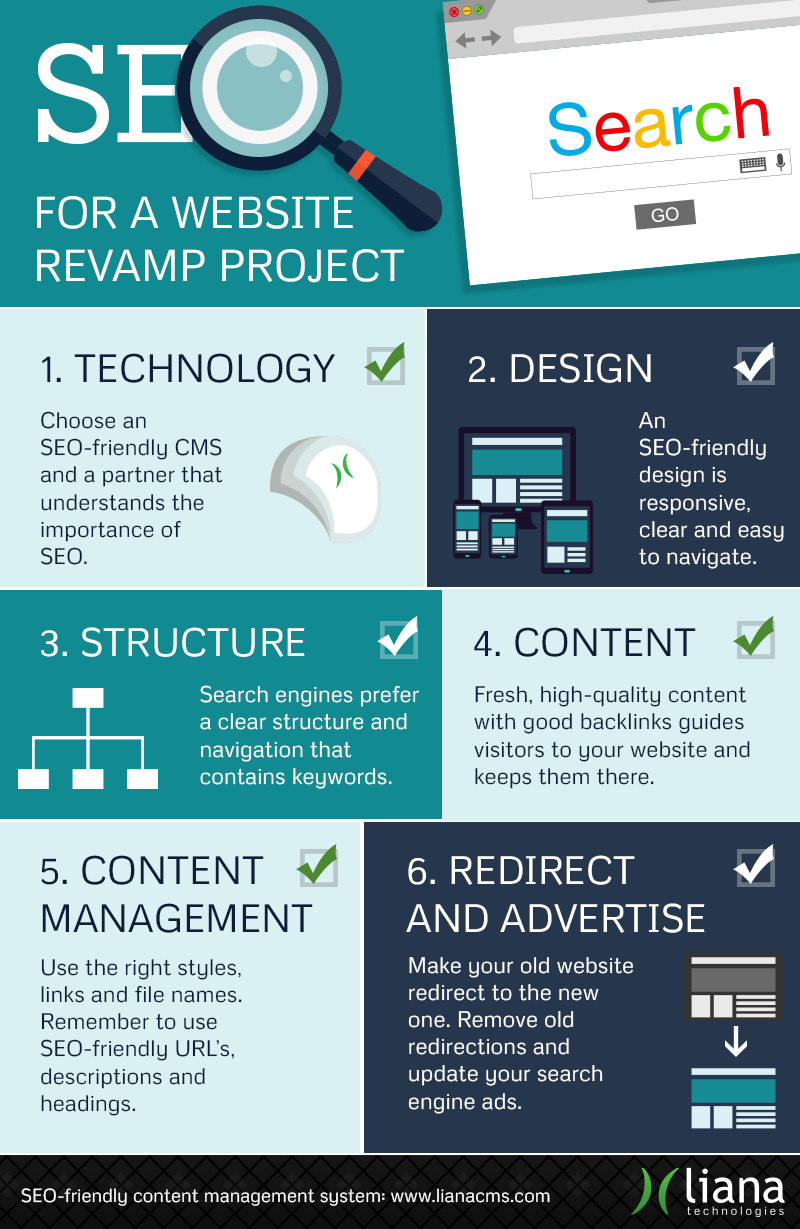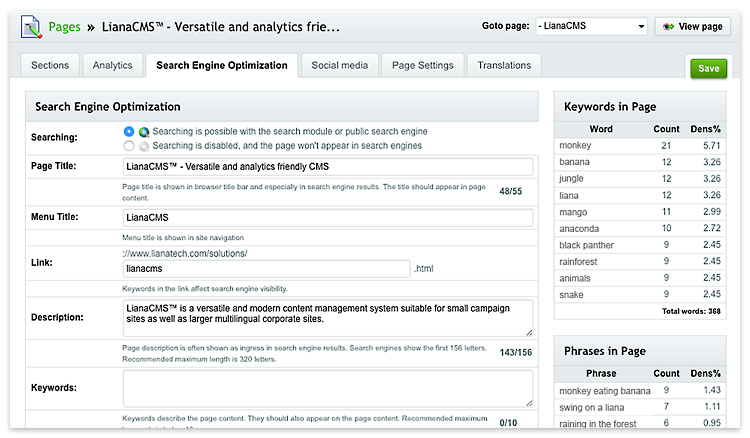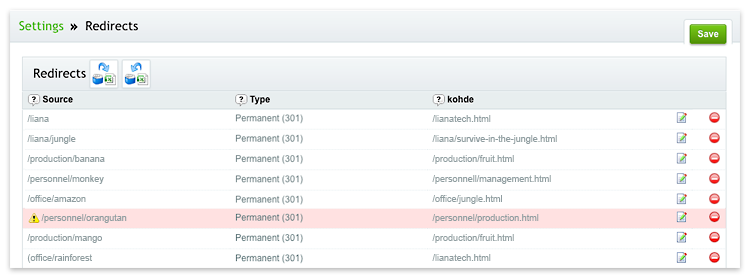

 Katso kuva
Katso kuva
![Before, after and during: SEO checklist for website revamp [Infographic]](https://www.prcloud.fi/media/international-pictures/en/news/cache/seo_for_website_revamp_lianatech-315x210,c,g=n.png)
SEO is especially important during a website or online store revamp project.
With most people starting their journey on the customer path in search engines, understanding search engine optimization (SEO) and using it to your advantage is critical for every organization. Even though better algorithms have made working with search engines easier, there are still many things to remember. SEO is especially important when handling a website or online store revamp project.
To help you with your revamp project, we have compiled a checklist of the most important things to remember about SEO.

Be careful when choosing a technology provider and a CMS tool. It is crucial that your service provider understands the importance of search engines.
Tehnology-wise, the CMS should be able to manage sitemaps and redirections, as well canonical tag settings. Make sure that the sites use https encryption if the page asks for any contact information, payments or log-in info.
Ask your potential partner to show you what their daily SEO work looks like. Are URL addresses formed straight from the page's title and can they be changed? How about changing the data on meta description and title fields or making redirections? Does the service provider offer training?

Image: This is what everyday SEO looks like on LianaCMS. Meta data fields, as well as robots files and canonical link defining can all be easily done in one place.
An important part of both search engine visibility and usability (that often are one and the same) is the loading speed of web pages. Check where the servers are located and make sure they are reliable. If your website has visitors from all over the world, verify from your partner that they can provide website content based on the user's location.
If you have an online store, ask whether your technology provider is able to support rich snippets data.This means for example price and product information that search engines show straight in their search results.
Search engine friendly design often equals user friendly design. However, you should make sure that the web designer also understands the meaning of search engines and that they have proper experience in designing websites or online stores.
Search engine friendly design is:

Image: Those that get lost on the Liana Technologies site are directed to the front page.
SEO should also be considered when designing the structure and navigation of the site. The navigation should contain keywords, be clear and quickly direct the visitors where they want to go. It is essential that the structure is logical, such as:
Right: Men's shoes – sports shoes – work shoes – sandals
Wrong: Men's shoes – leisure – sports – vacation.
When planning the content for new pages, it is important to take into consideration which are currently the most important pages, the most important keywords and future goals. In terms of SEO it is important that:
Even though Google does understand synonyms better and better, a clear focus on the important pages is still essential. For example, if cat food is sold online, there must be a page on the site that uses exactly the right words for this purpose in the URL addresses, headings, text content, as well as links.
Right: “cat”, “food” and “online”
Wrong: “nutrition”, “feeding” or “pets”, “Cat food brand 1”, “Cat food brand 2”.
Whether someone in your company is responsible for adding and managing content, or it is handled by an outsourced content manager, make sure that it is done in an SEO-friendly way. This means that, for example:
Right: Read more about cats
Wrong: Read more about cats
Right: www.cat.com/catfood-online
Wrong: www.cat.com/product10344
You can test your site either on a smaller or a larger scale, but be sure you're not the only one who has tested your site. It is important that people who are similar to the end user have tested the website before it is launched. Noticing and fixing mistakes in the planning stage is a lot easier and cheaper than changing the structure of an already published site.
If your company doesn't have a specific person that is responsible for search engine optimization, SEO is left for "no-one" and it's far too important for that. Make sure that someone is on top of SEO during the project, as well as after it. Typically this person is the content producer and also responsible for updating the website – they don't have to know how to code though. Also make sure that your technology provider offers training to your personnel.
Create a list of all the addresses on the current site. This can be done by exporting a list of pages that have traffic from Google Analytics, with a crawler program like SEO Spider, or sometimes directly from the CMS.

Image: In LianaCMS you can manage redirects easily with the redirection tool.
You don't want users to stumble onto your unfinished site while it is still under construction. By using a robots file you can prevent Google from finding the unfinished site before it is launched. You can either set the file yourself or ask your technology provider to set for you. Give permission for indexing only when the site is launched.
If the site has pages that you don't want Google to find at all, you can and prevent them from being visible in search engines with a robots file.
It is important to know what works right now. If you're not using any heavy-duty SEO tools (Search Metrics, Horizon), your most important tool is the old data from Google Analytics and Webmaster Tools (currently Google Search Console), as well as Adwords. Here you can see the most viable keywords. The pages that work the best also give you an indication of the most important keywords.
Google Analytics is the best and quickest way to find your most important pages.
If the renewal is big, tell your customers in advance. Customers are more prone to leaving the page if it doesn't meet their expectations. Bigger brand changes often backfire in search result rankings because search engines punish for high bounce numbers. Therefore, prepare you customers beforehand or make it clear with a popup window that a site renewal/brand renewal is taking place.
13. Direct all your old addresses with 301 direction to new corresponding ones with CMS's redirection tool, for instance – and remember to test them with SEO Spider and Google Search Console's “Fetch as Google” function (if errors come up, fix them or ask for reindexing).
14. Check your most important backlinkers, i.e those that have links to your site (partners, bloggers etc.) and make sure they direct straight to the new address and not through redirection. This can also be checked from Google Analytics.
15. Remember to check the robots file when the website is launched so that search engines can find it.
16. Check internal links so that none of the temporary links that were used during the project are left.
17. Make sure that there are no redirections that direct to the old site. Transfer all redirections straight to the new site.
18. Make sure that Google Analytics, or other analytics you use, work on the new site.
19. Make sure that Google Adwords and other search engine and banner advertising direct to addresses that definitely work and that the content still corresponds to the ads.
20. If you handle the sitemap of your website yourself, you should send it to Google. If you operate with an SaaS provider like Liana Technologies, the sitemap is created and typically managed automatically, so you don't need to do this.
21. Follow your site's analytics closely for the next month – are people still visiting and are they finding what they're looking for? Follow visitor numbers, bounces, time spent on the site and the development of your most important pages.
22. Use a crawler tool (Google, SEO Spider) often during the first month and make sure redirections still work.
23. Ask for and follow up on customer feedback.
If you change to a whole other domain when doing the renewal (for example, http->https or an international domain.fi → domain.com) remember these:
Tilaa kuukausittainen uutiskirjeemme joka sisältää aina uusimmat mielenkiintoiset artikkelit.
Key opinion leader surveys can be done as one-off by monitoring the current situation. In the best case, however, finding influencers is a part of everyday communications and marketing that includes social media and media monitoring, press releases and PR.
Read More